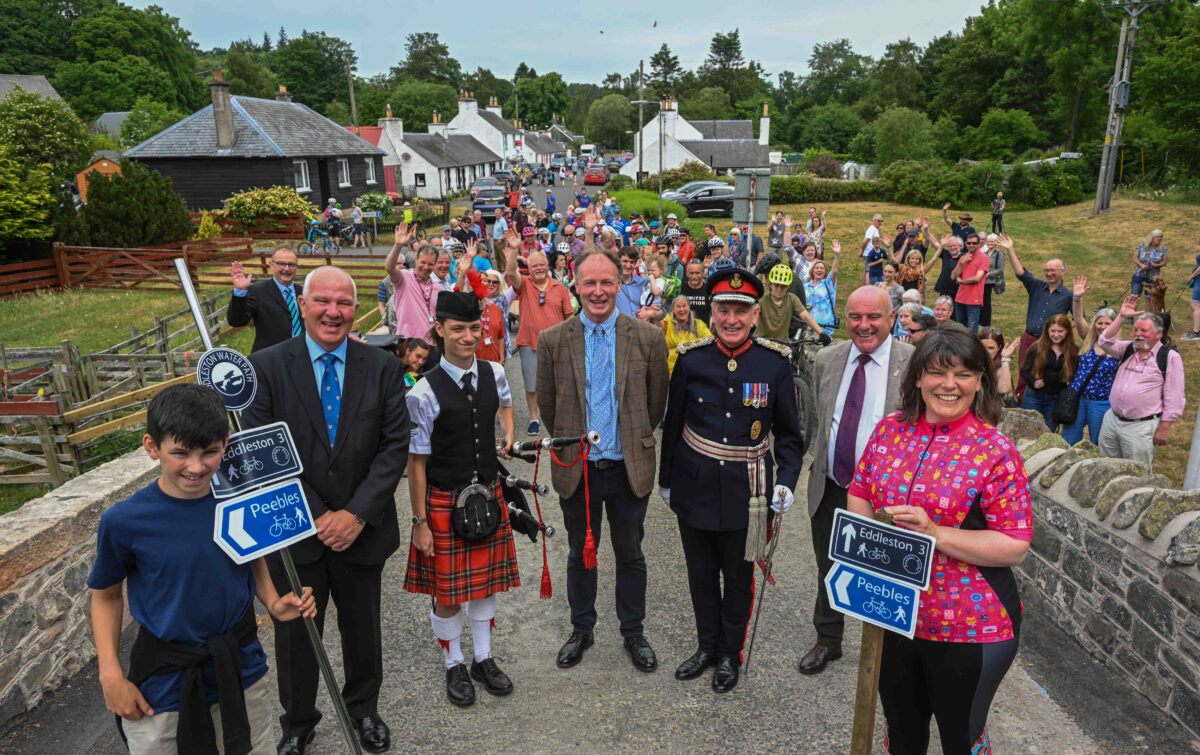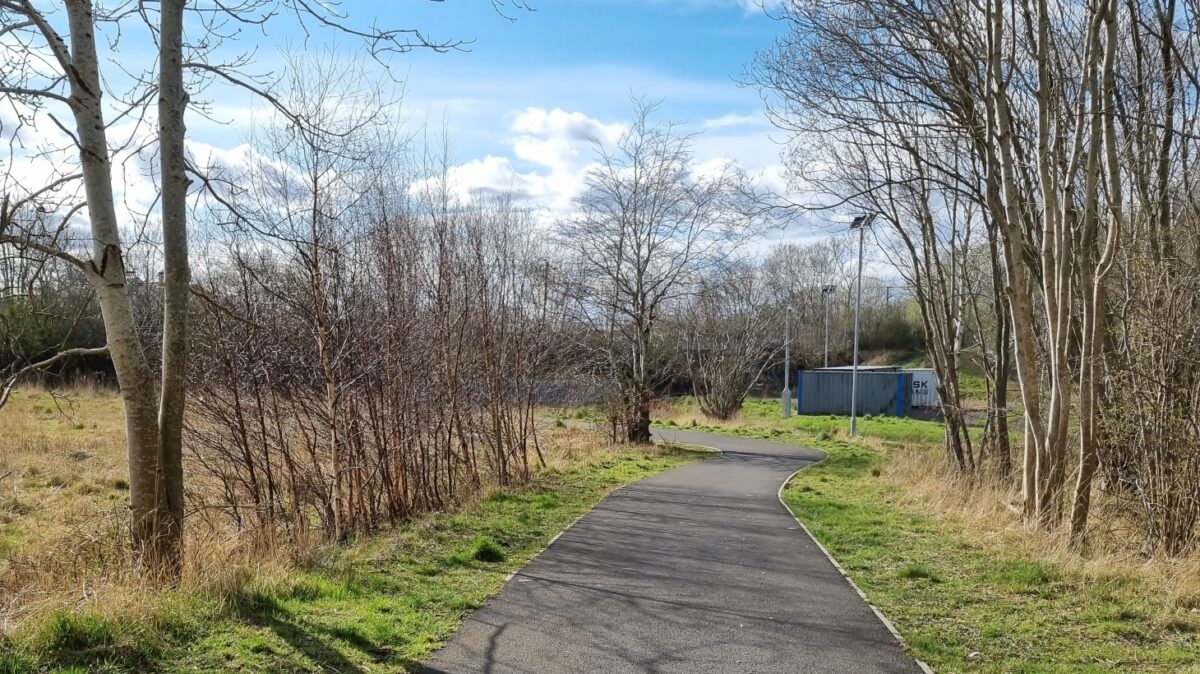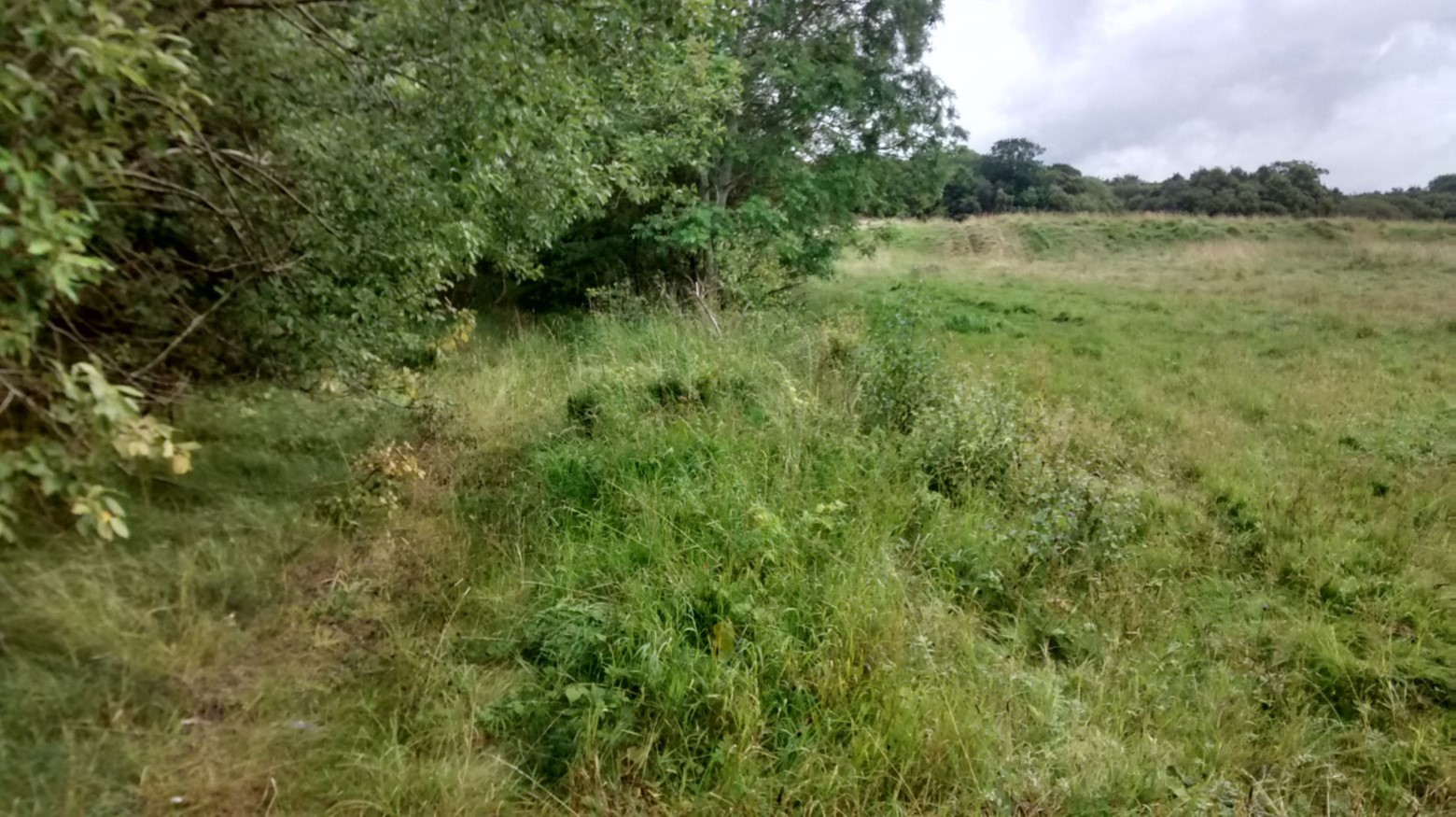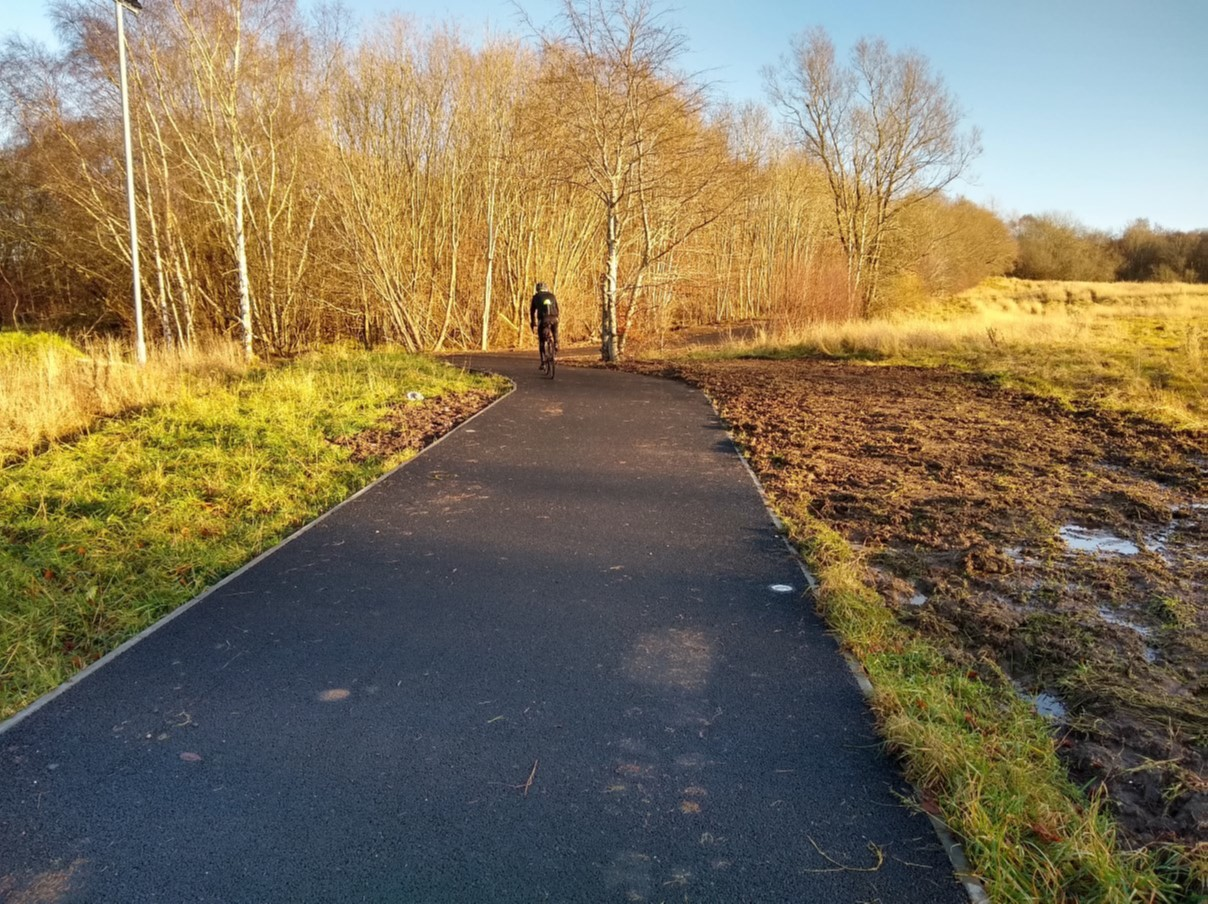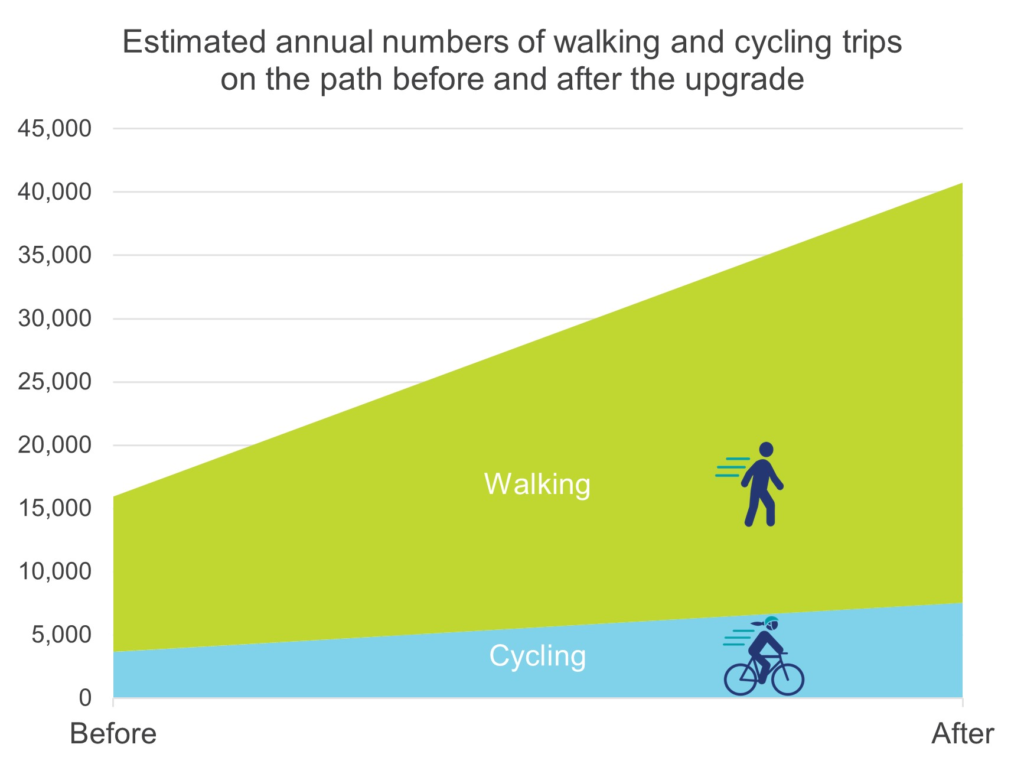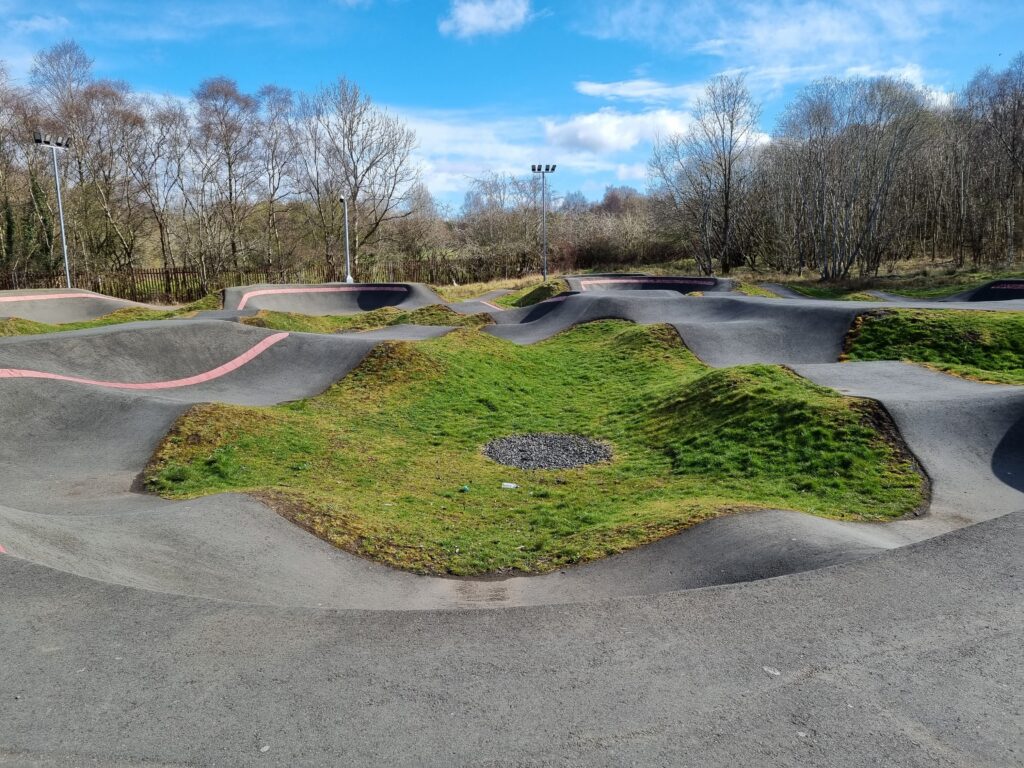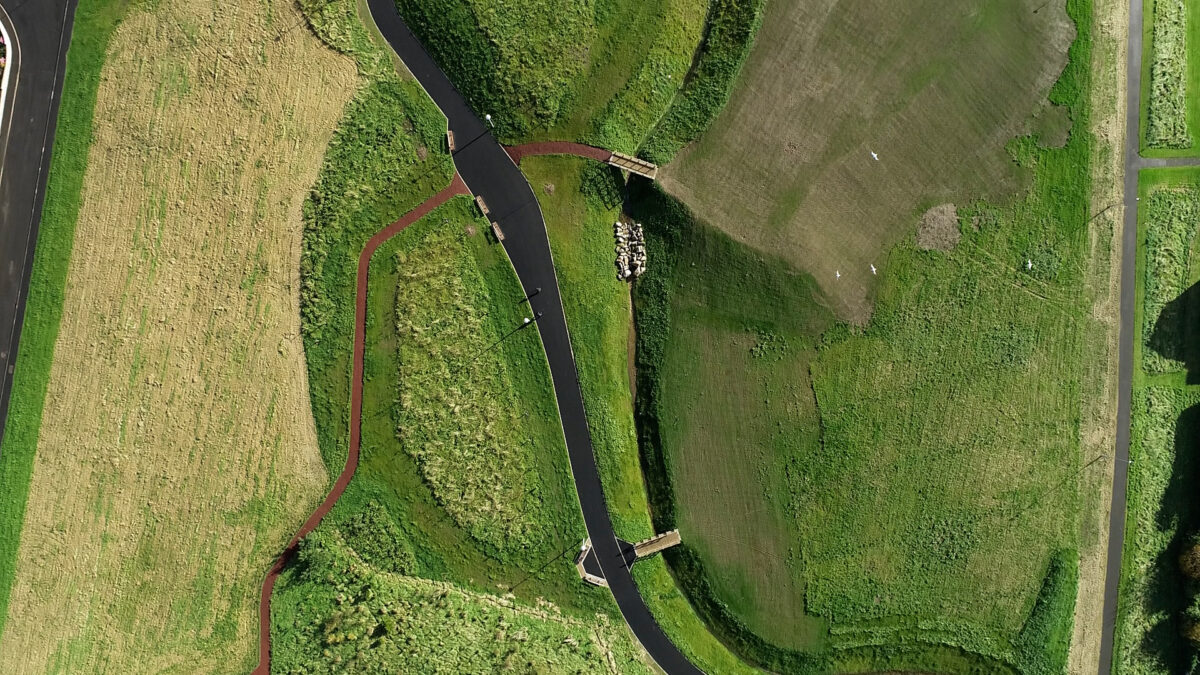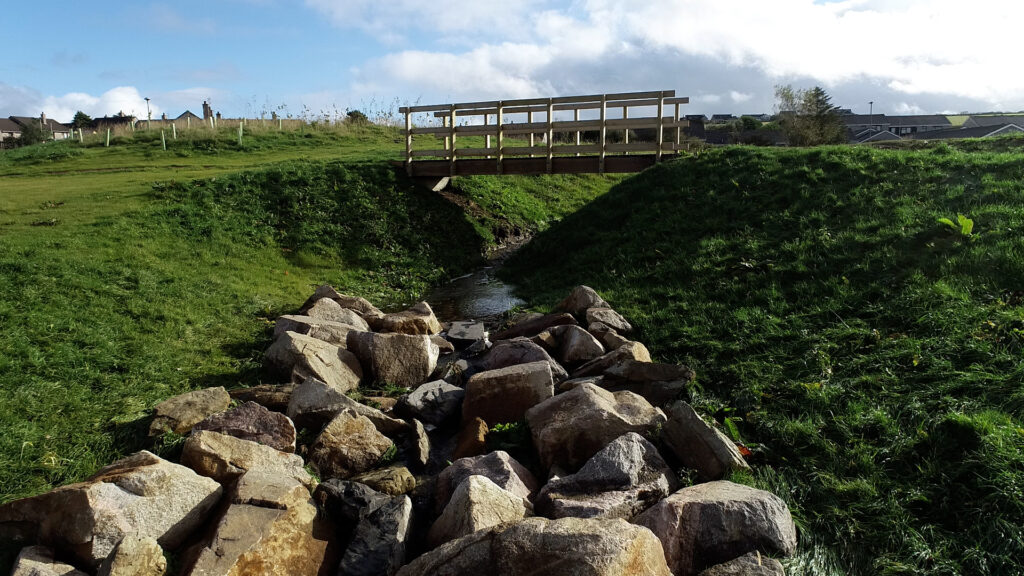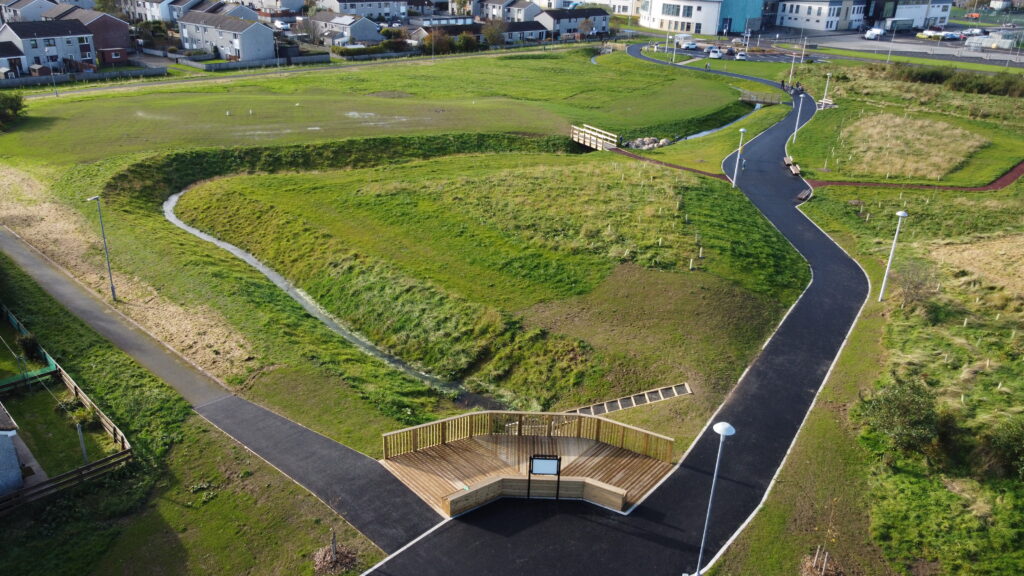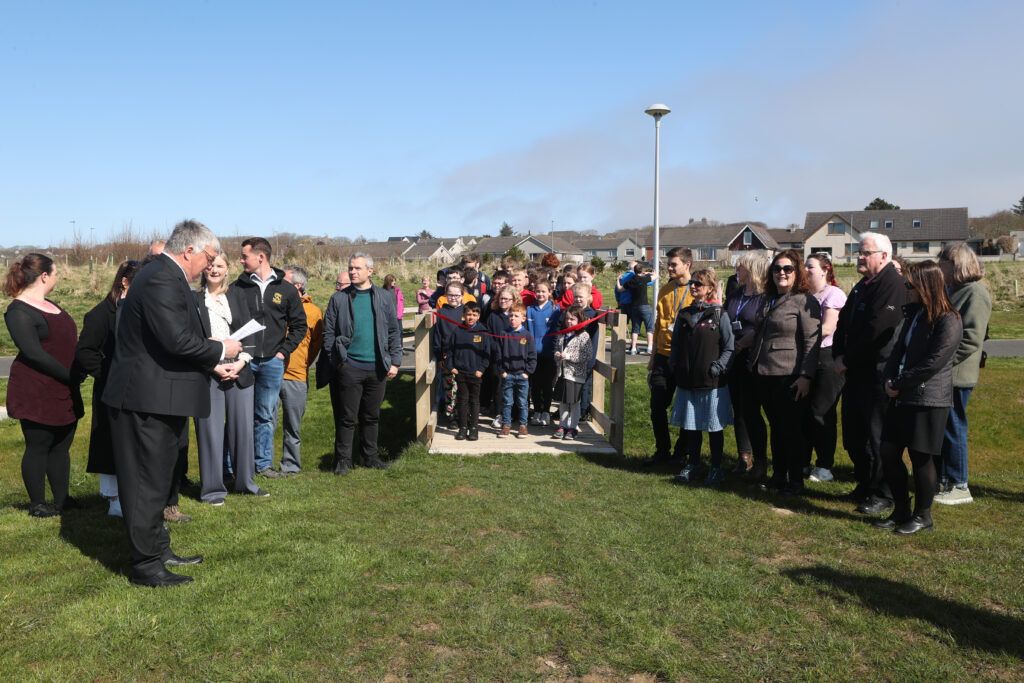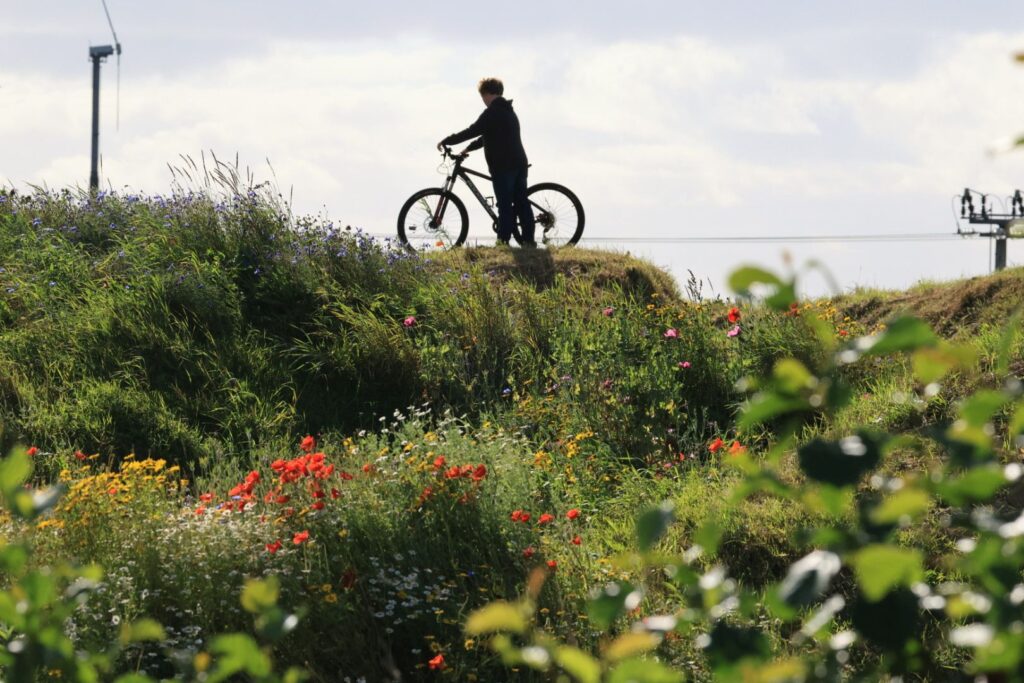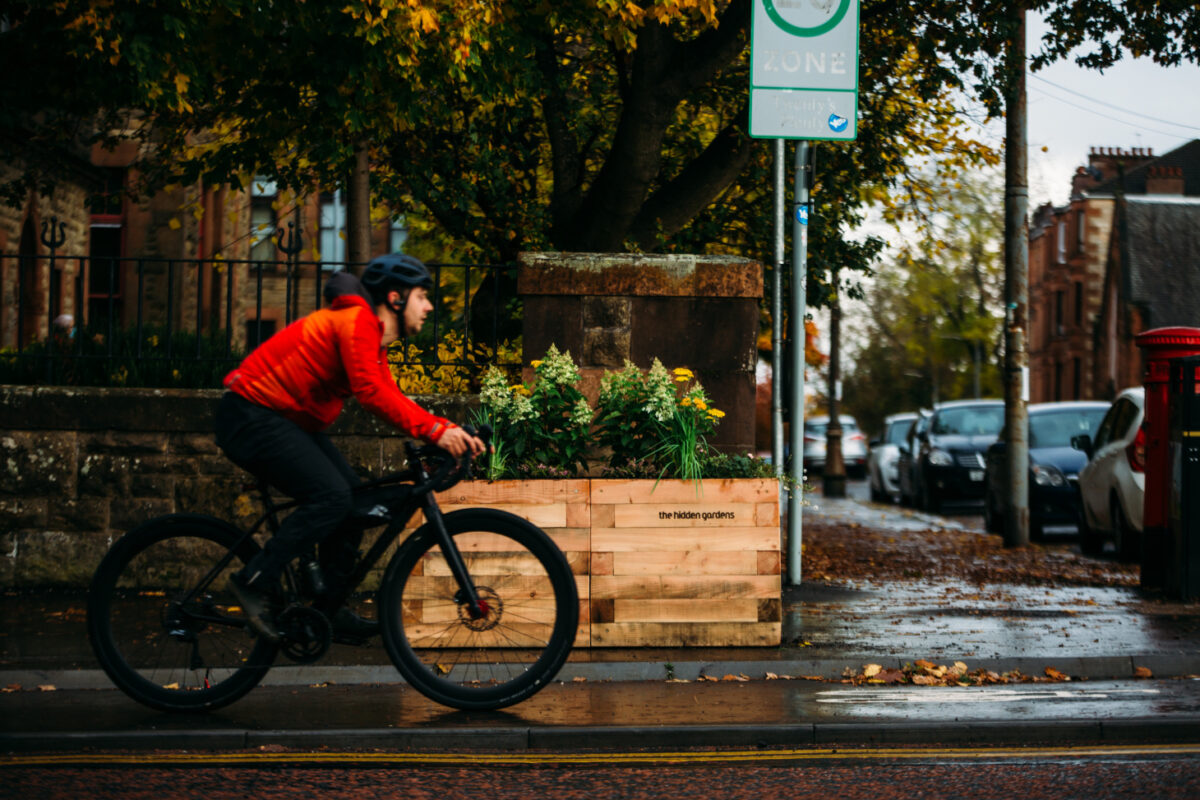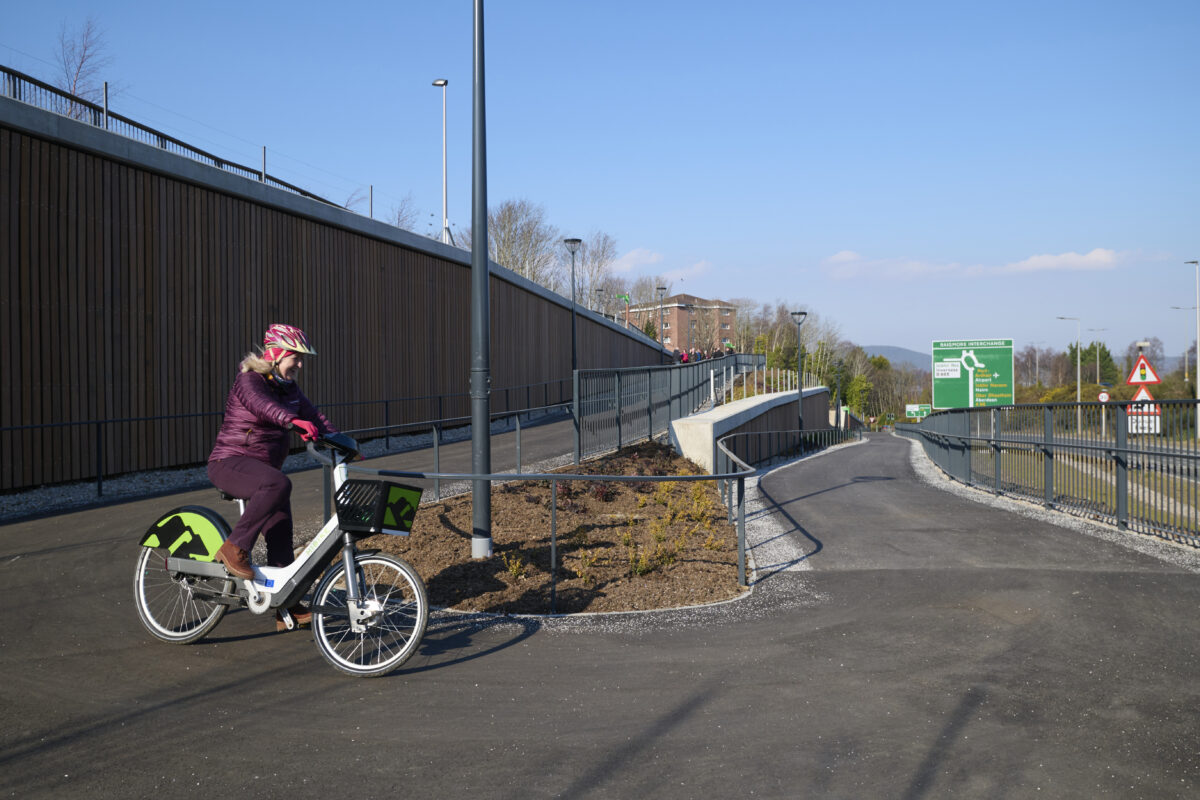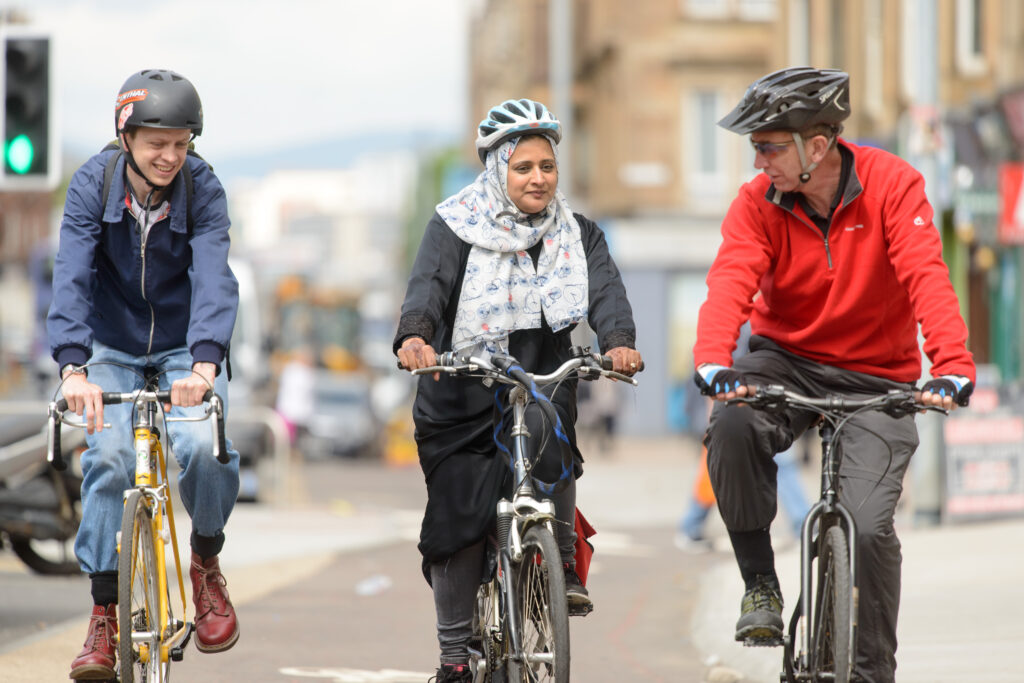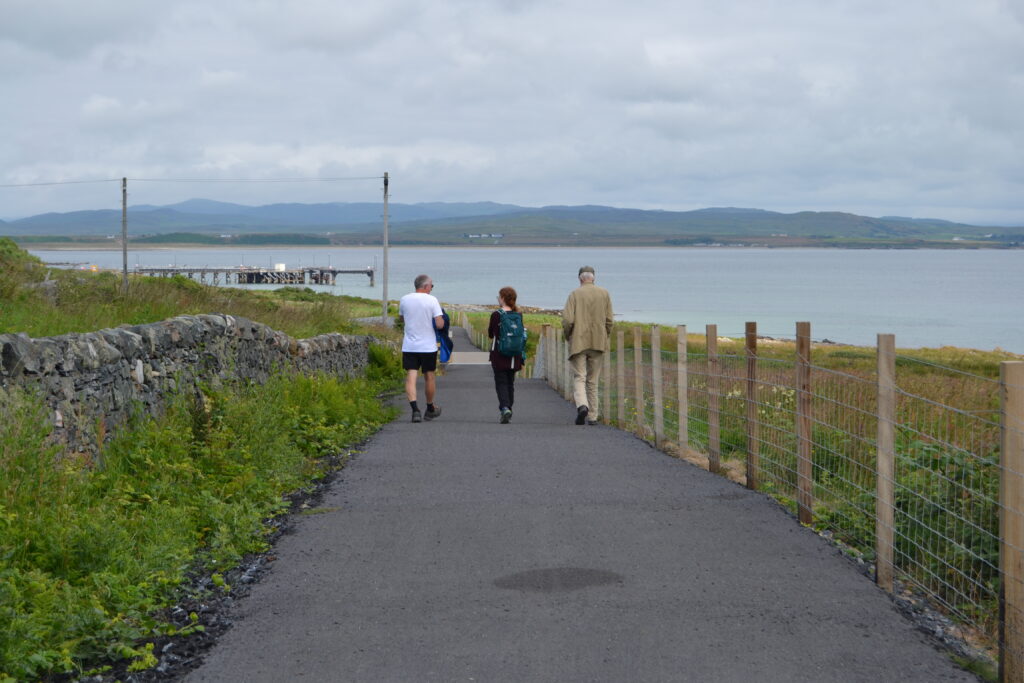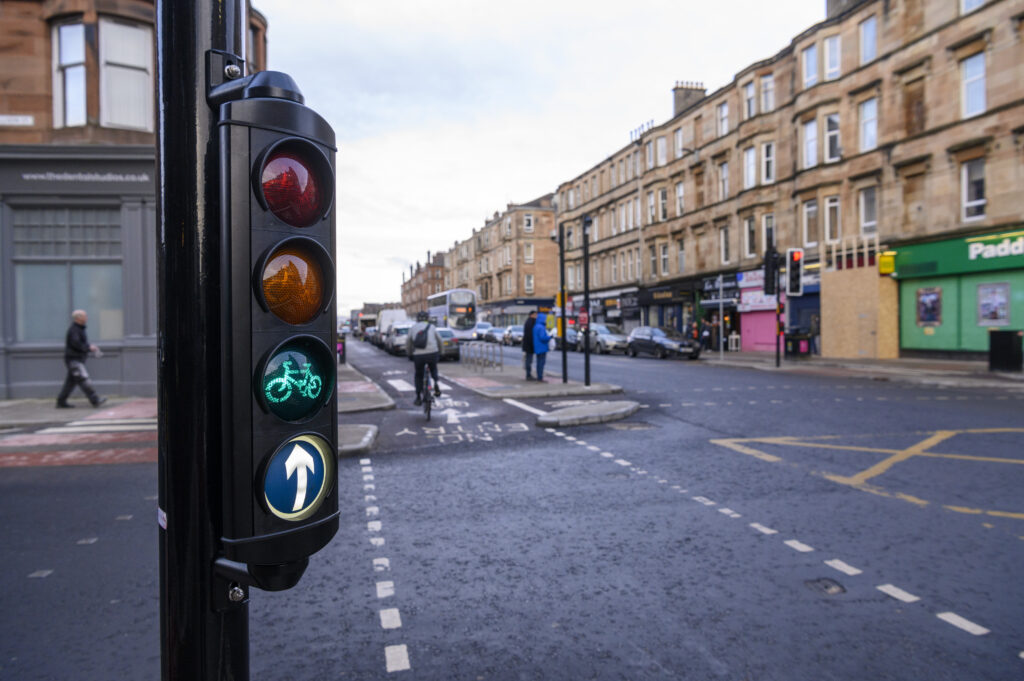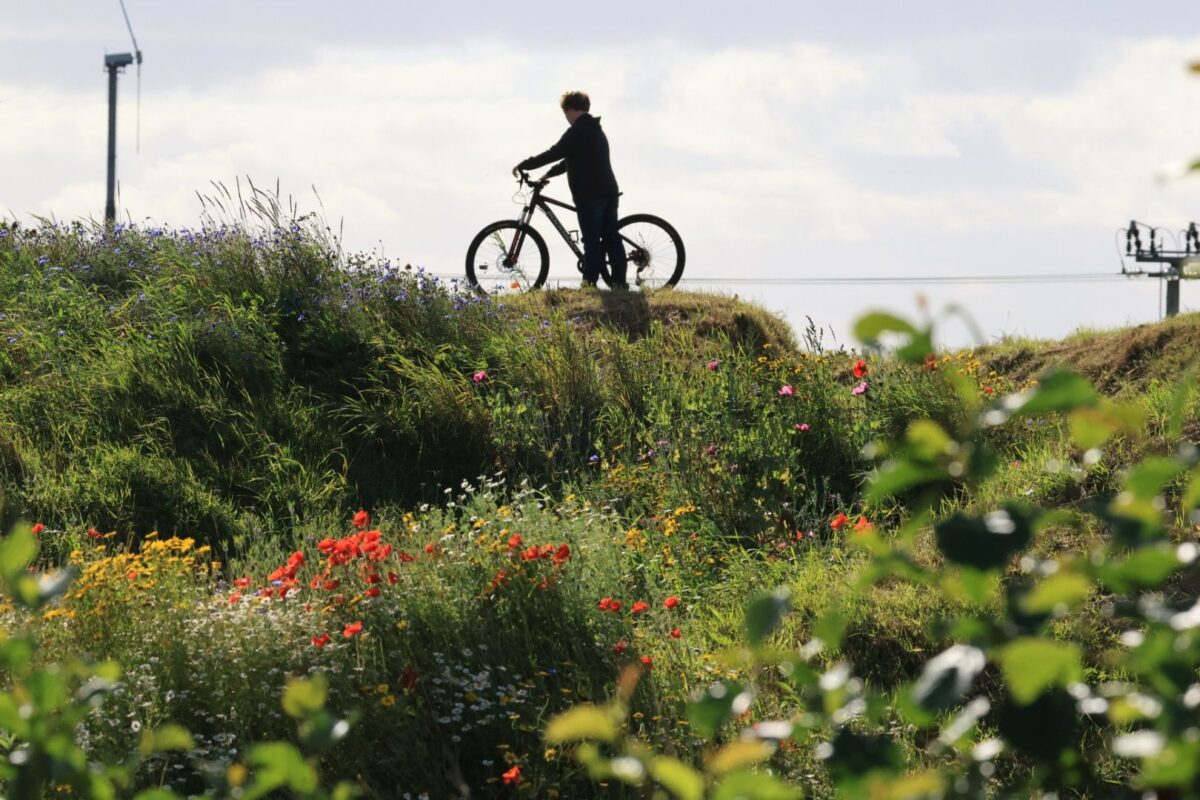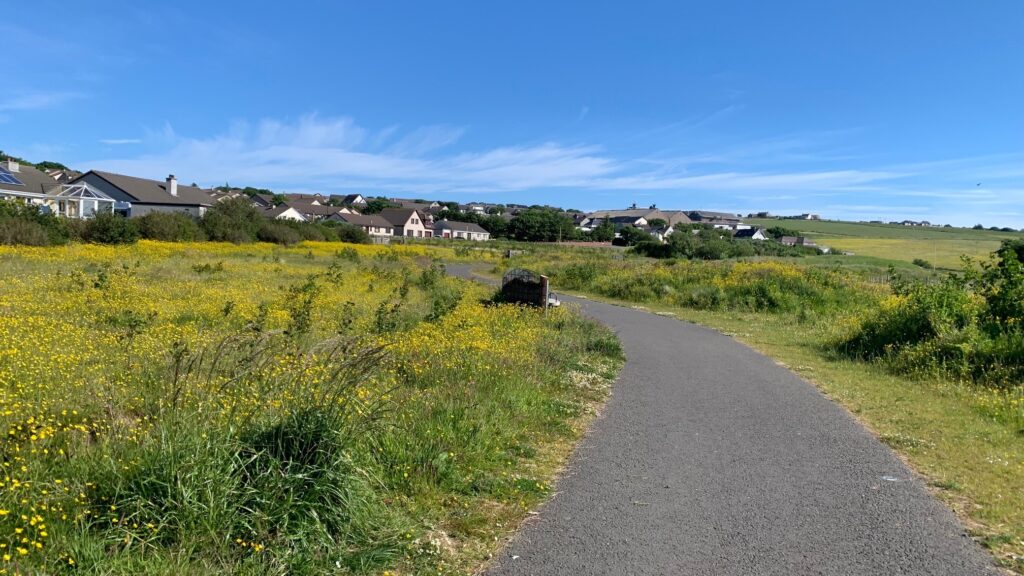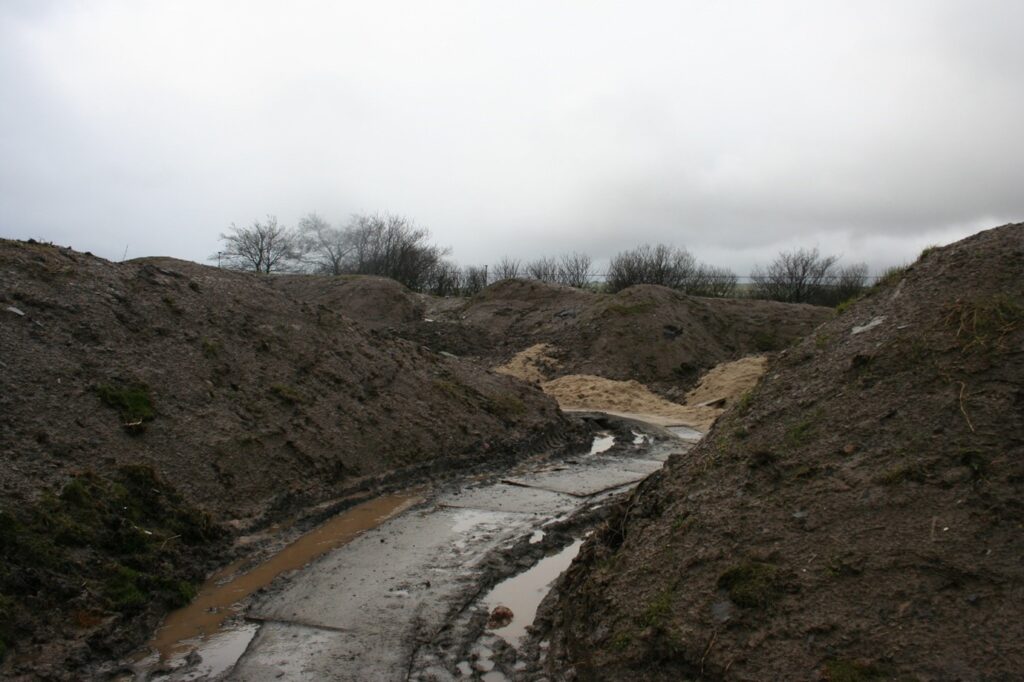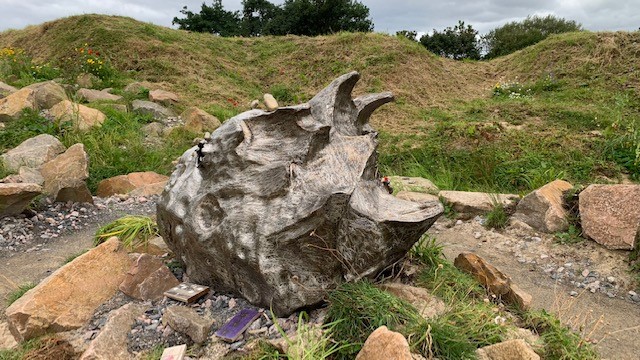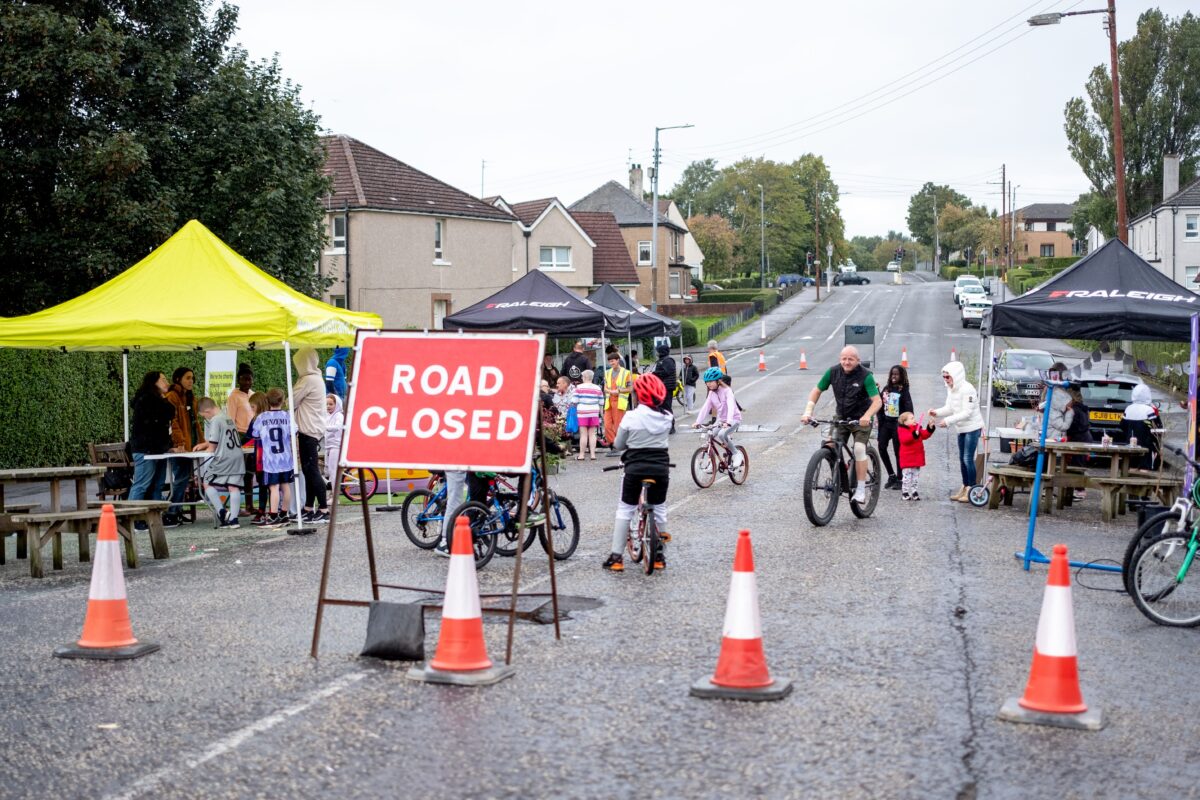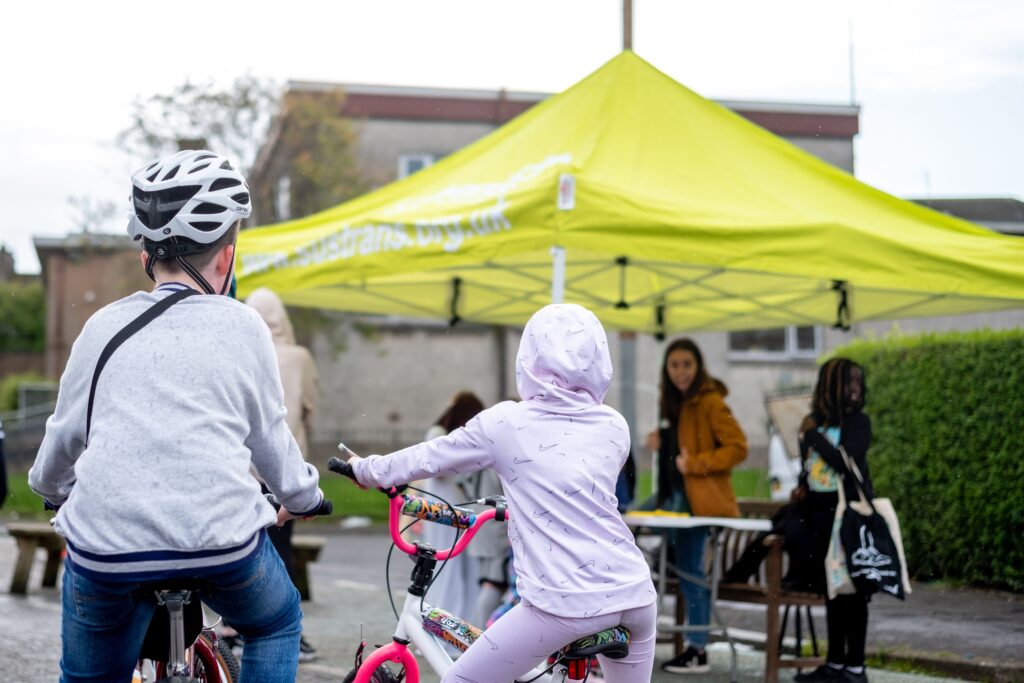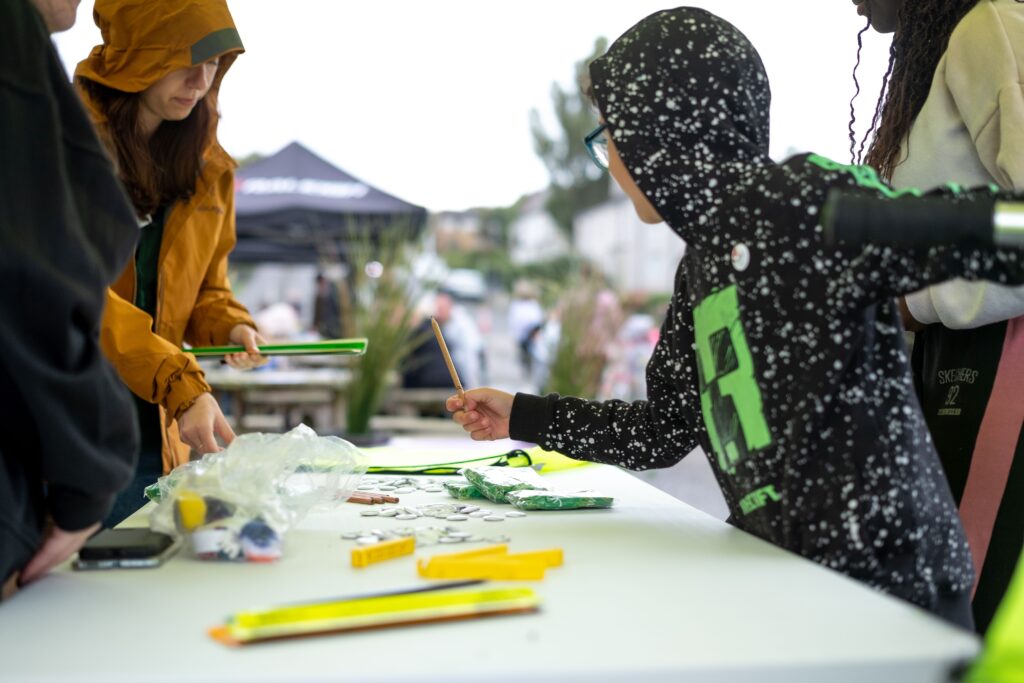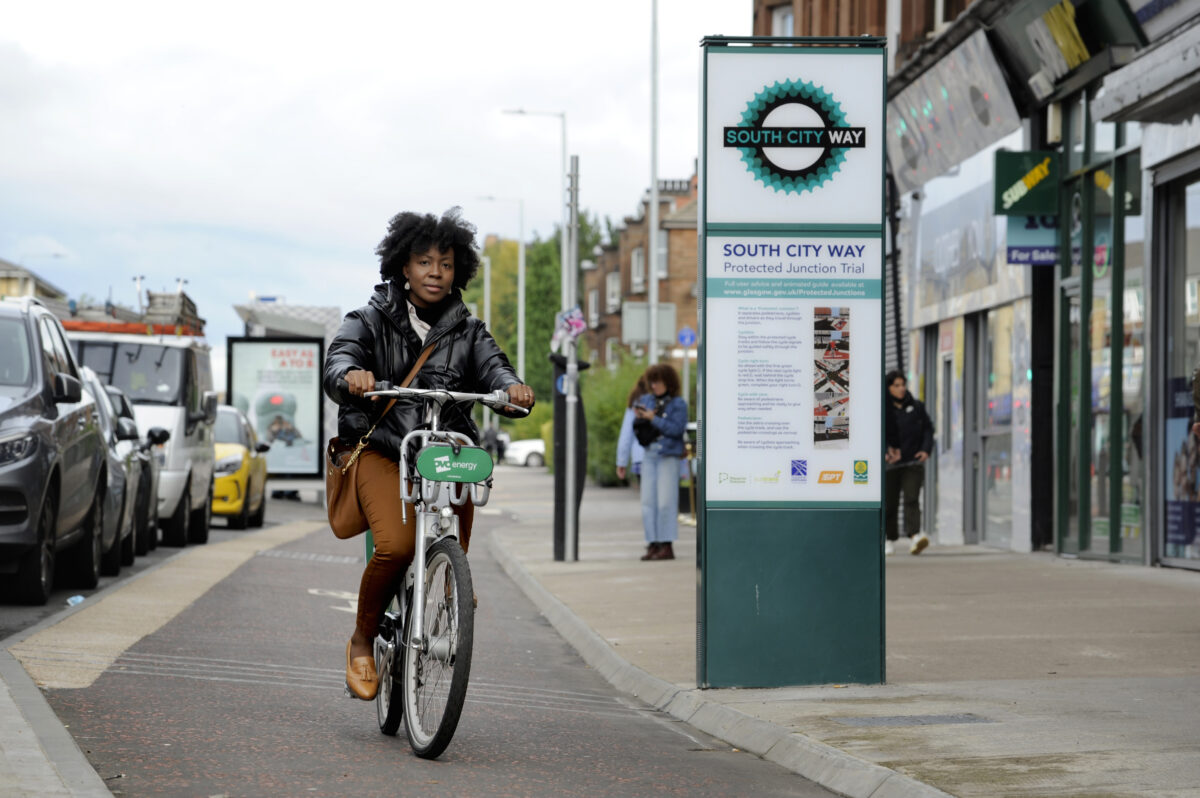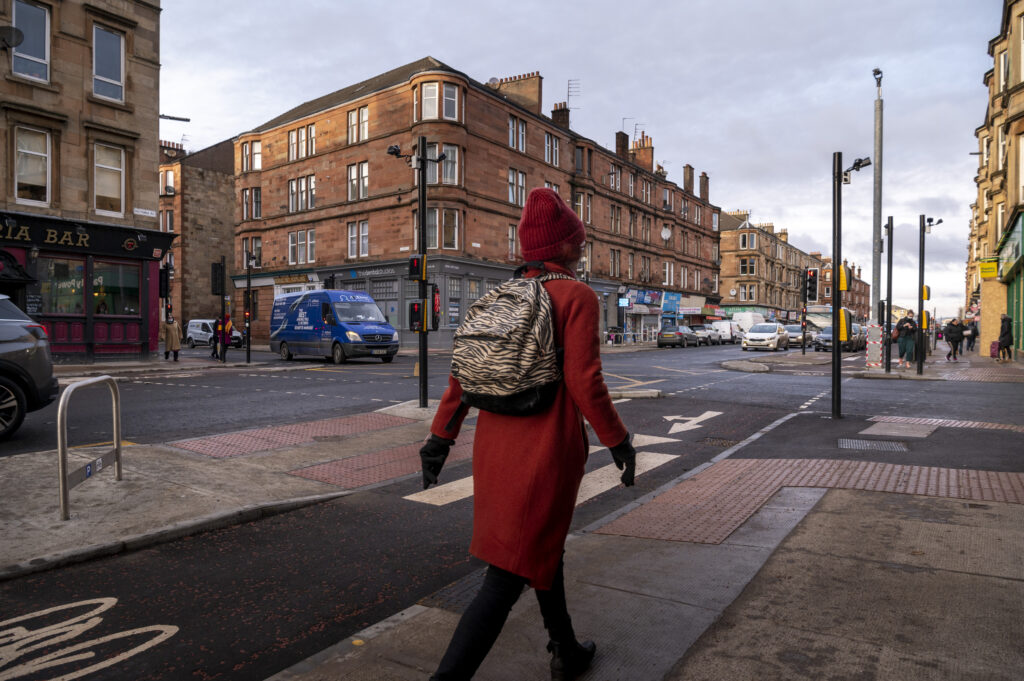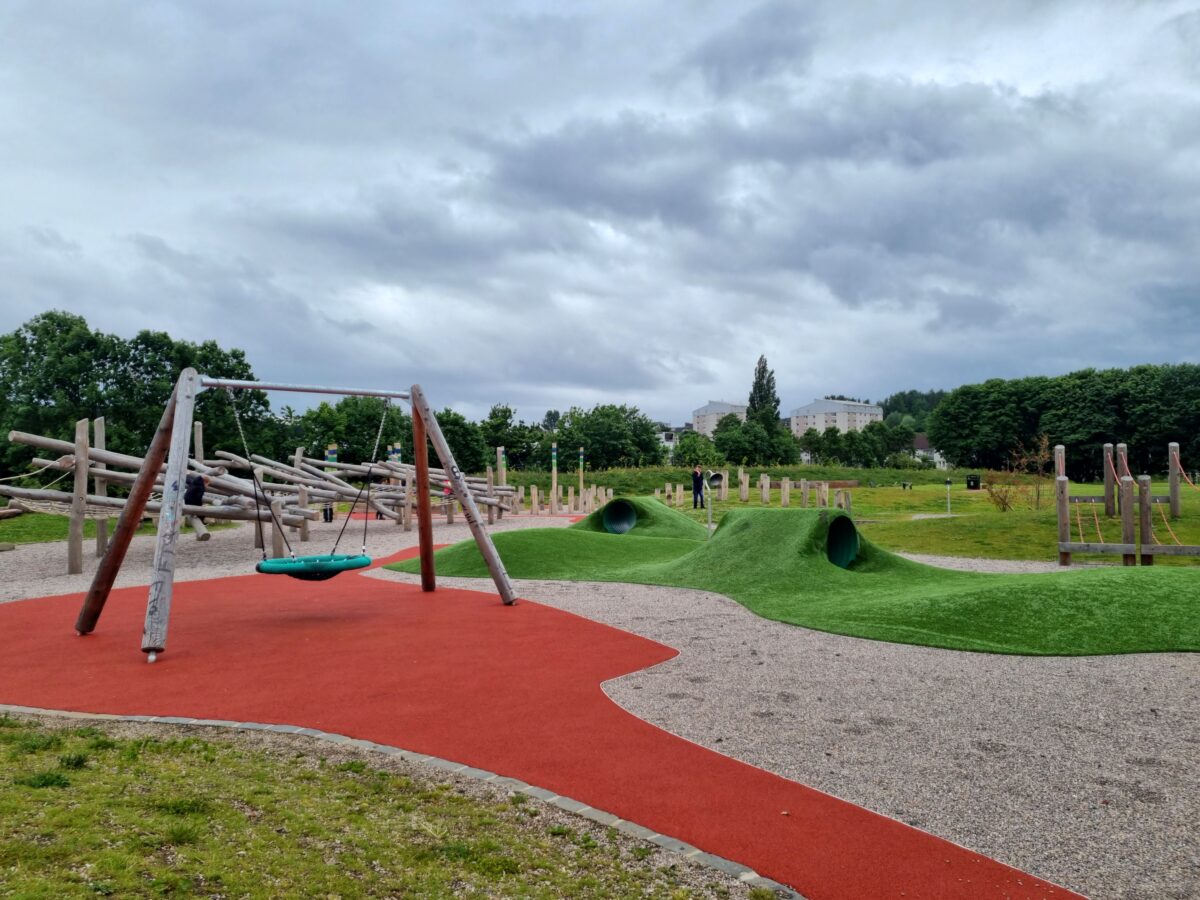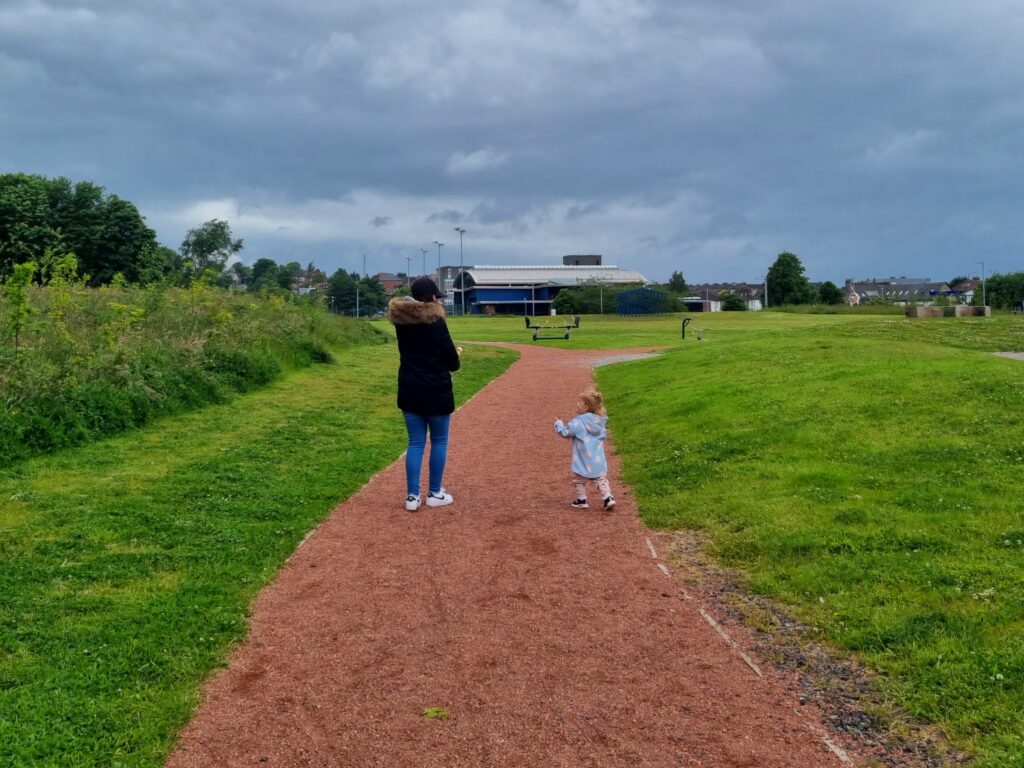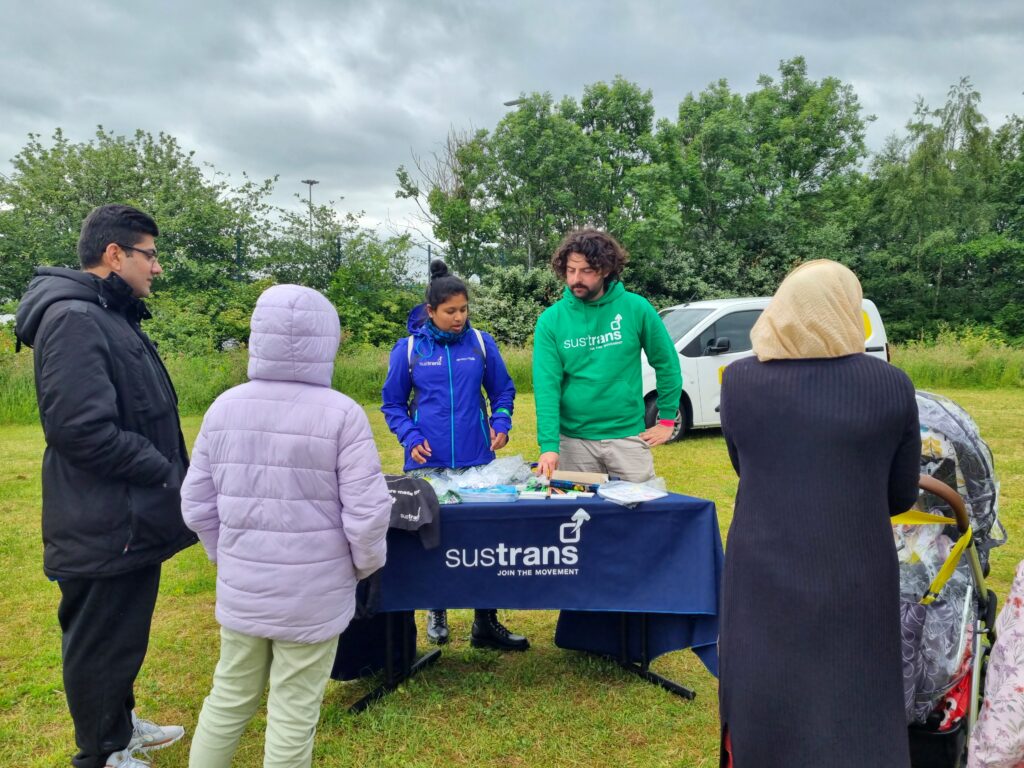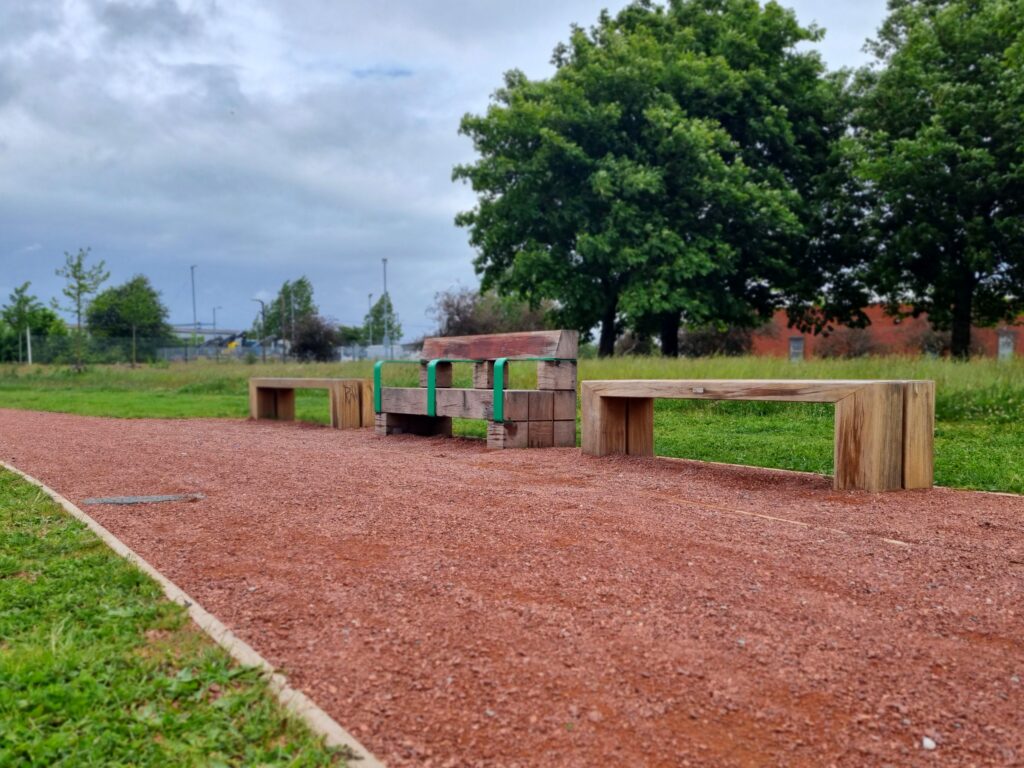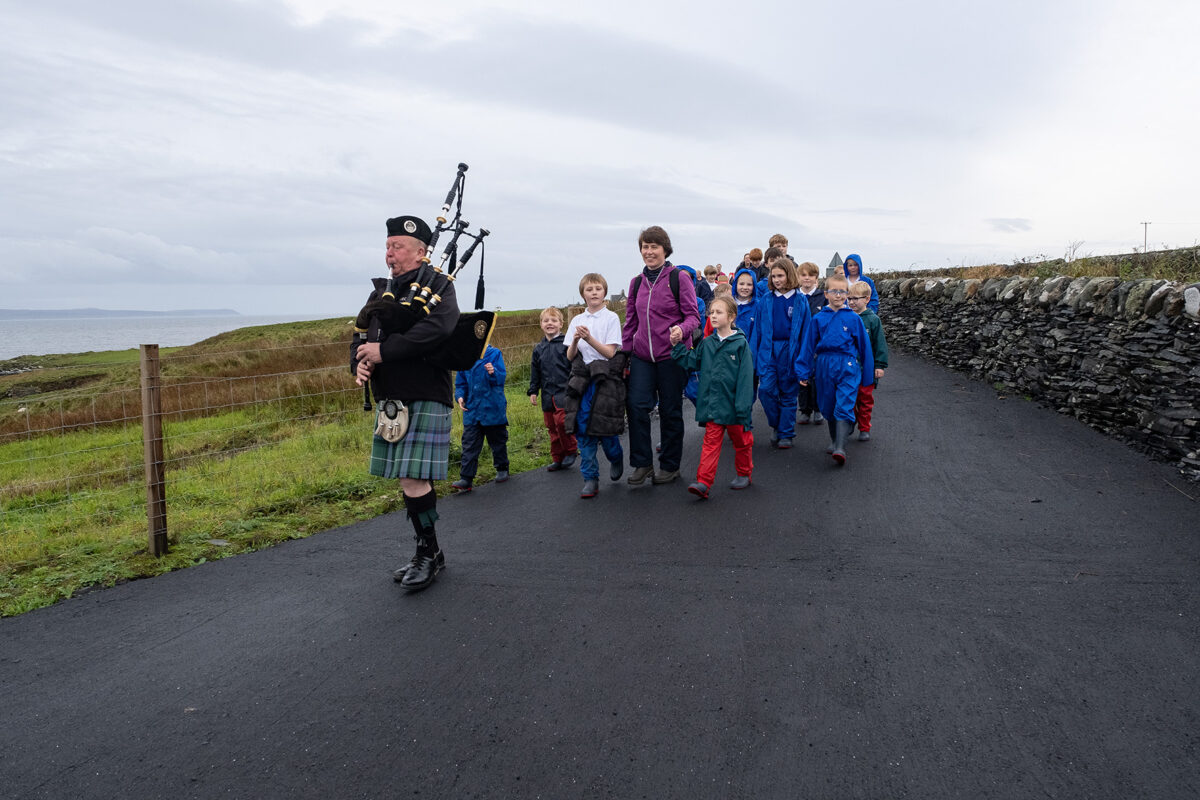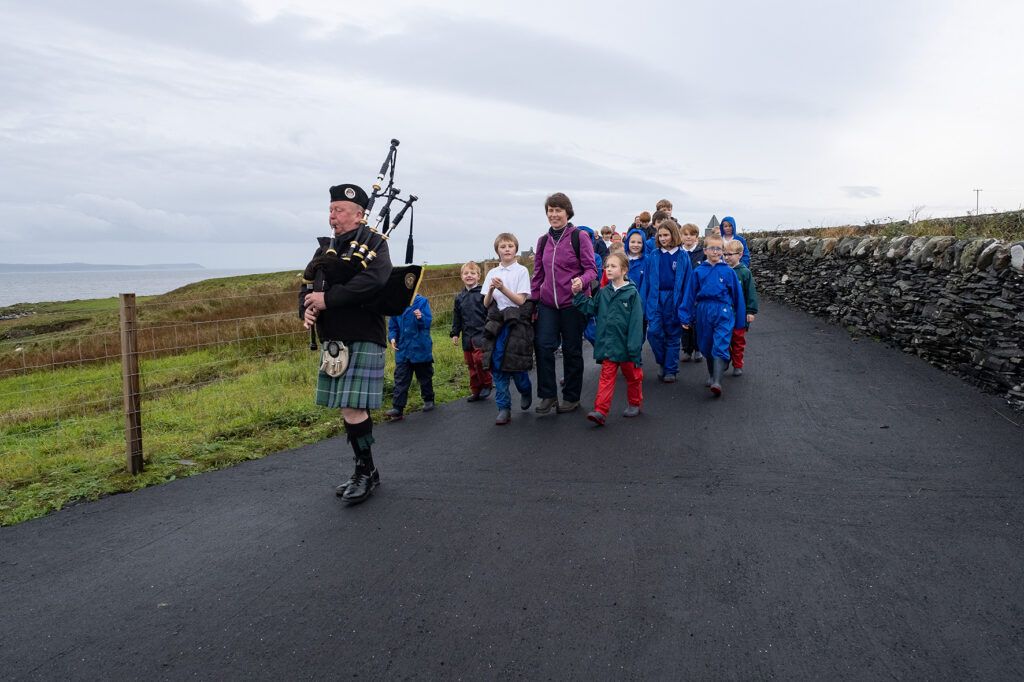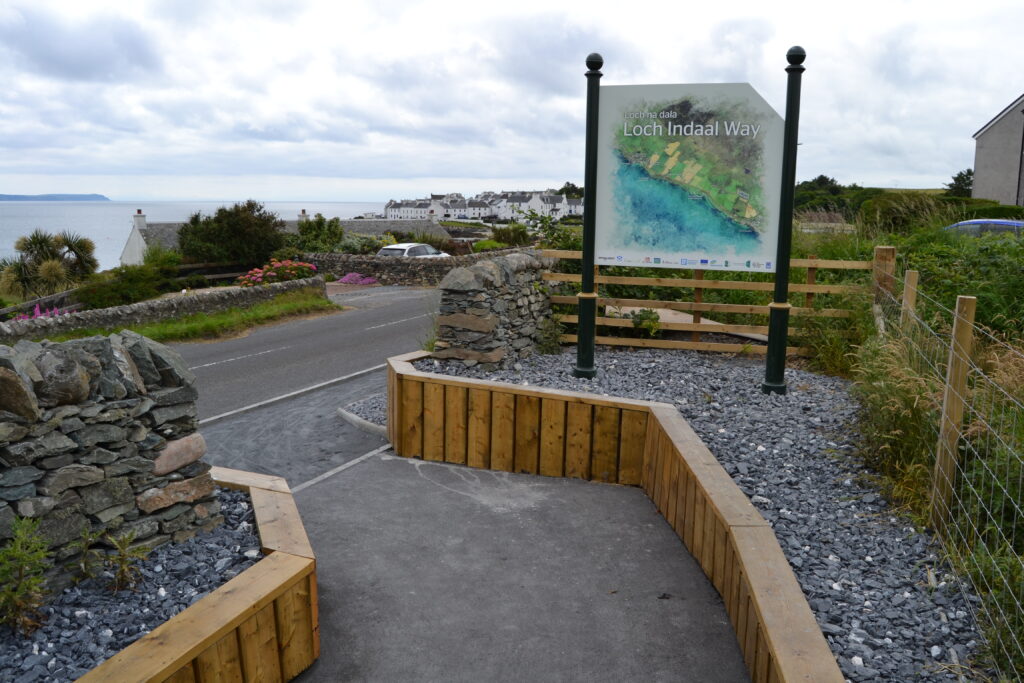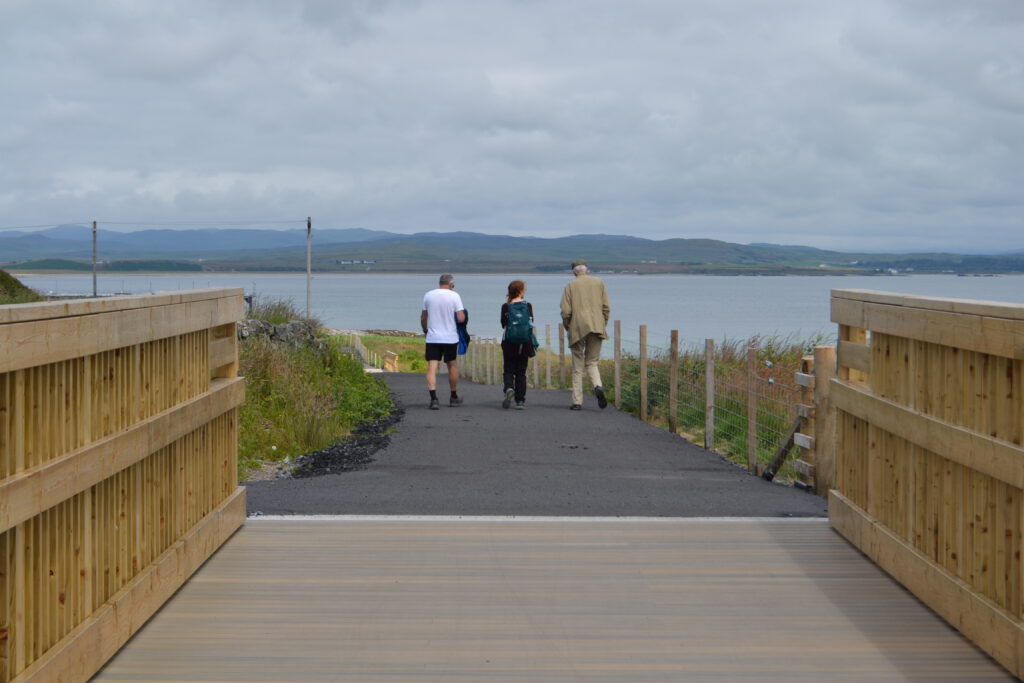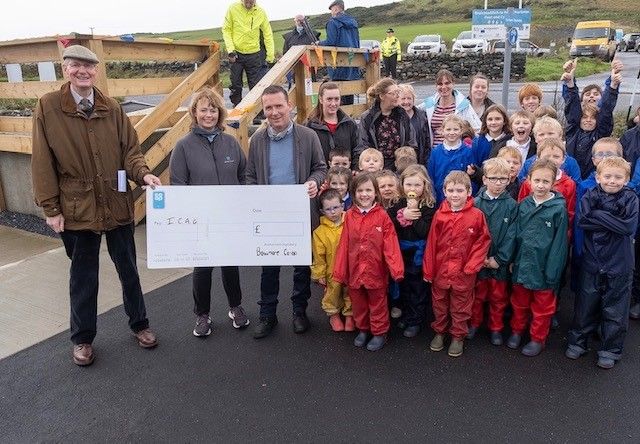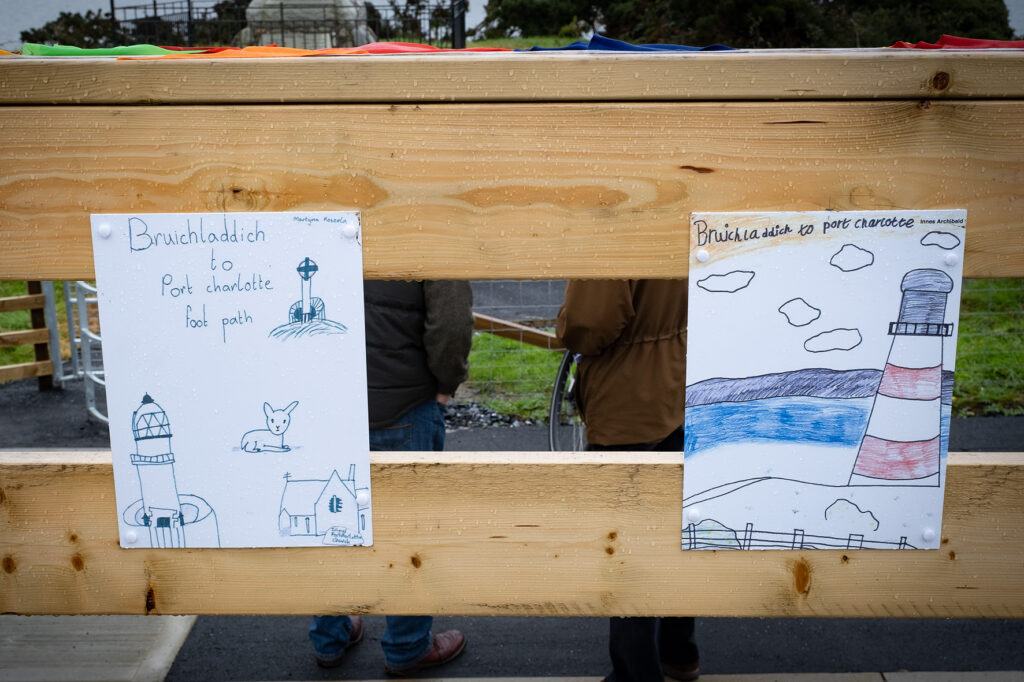A vital rural link
A new off-road shared-use path between the county town of Peebles and the satellite village of Eddleston in the Scottish Borders officially opened on the 17th June 2023.
Spanning 6km in length, the Eddleston Water Path provides a convenient and accessible route for local people and visitors to the area to walk, wheel and cycle between the settlements, connecting communities, businesses and key services like never before.
The new path will also benefit equestrians in the area, providing a safe and more relaxed riding experience set back from the road.
The project was made possible by over £2 million of funding from the Scottish Government through Sustrans Scotland’s Places for Everyone programme and South of Scotland Enterprise (SOSE).
Construction work started on the project in late 2021 and was completed in early June 2023.
Community ambition in action
From the very beginning, the Eddleston Water Path project has been shaped by the ambitions of the local community.
Local groups and campaigners were instrumental in calling for improved active travel infrastructure in the area, having spent years promoting their vision for a healthier and more sustainable future.
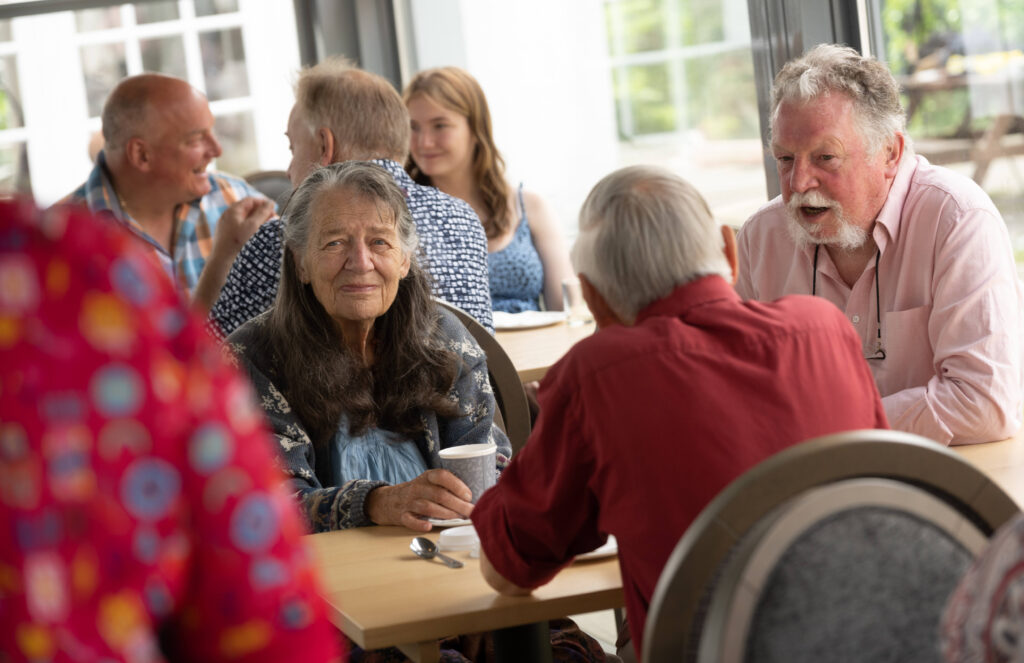
Peebles Community Trust (PCT) led the design of the project once funding was secured, and feedback was gathered at every stage to ensure the Eddleston Water Path reflected the needs and wants of residents.
This approach has resulted in the creation of a well-loved community asset which has provided affordable access to employment opportunities, key services and treasured greenspace.
Accessibility for everyone
Before the Eddleston Water Path was constructed, travelling between Peebles and Eddleston was only possible via a busy and fast-moving road.
Now complete, the project provides an alternative route where all residents and visitors to the area, regardless of age or ability, have the option to leave the car at home and walk, wheel and cycle instead.
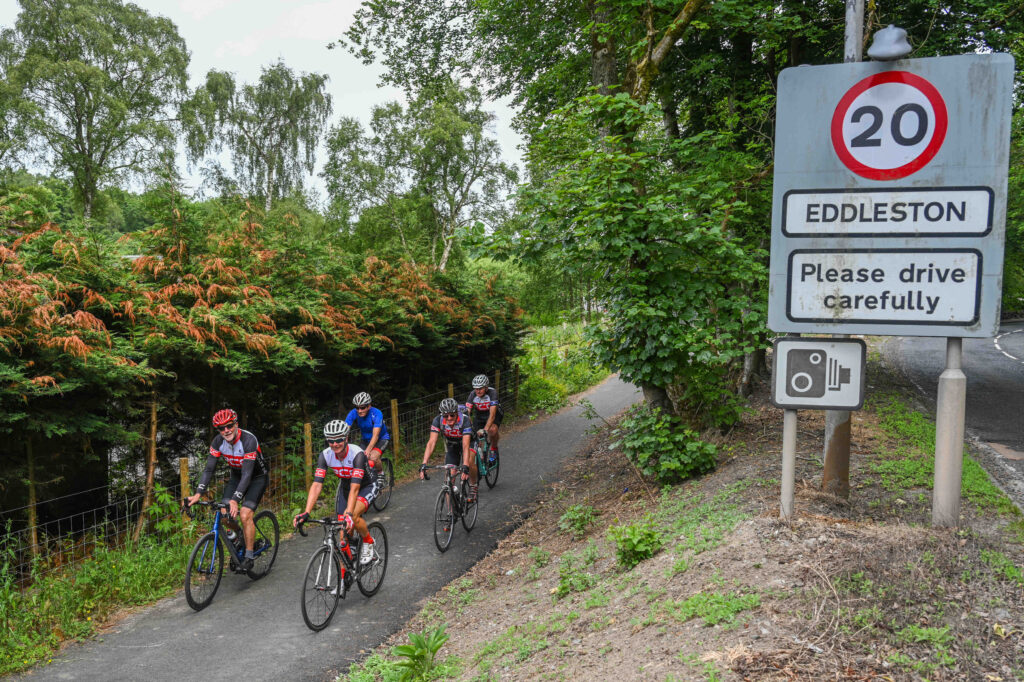
To futureproof the project, flood mitigation and measures to increase biodiversity were built into the designs.
The path has also contributed to the areas extensive network of paths for leisure and riding, linking into a wider network that includes the existing Tweed Valley Railway Path to the south.
A cause for celebration
The Eddleston Water Path was officially opened on the 17th June 2023 at an event attended by local residents, project partners and elected representatives.
Following a series of speeches, a piped procession was laid on for those in attendance before the ribbon was cut by local primary school student Conor.
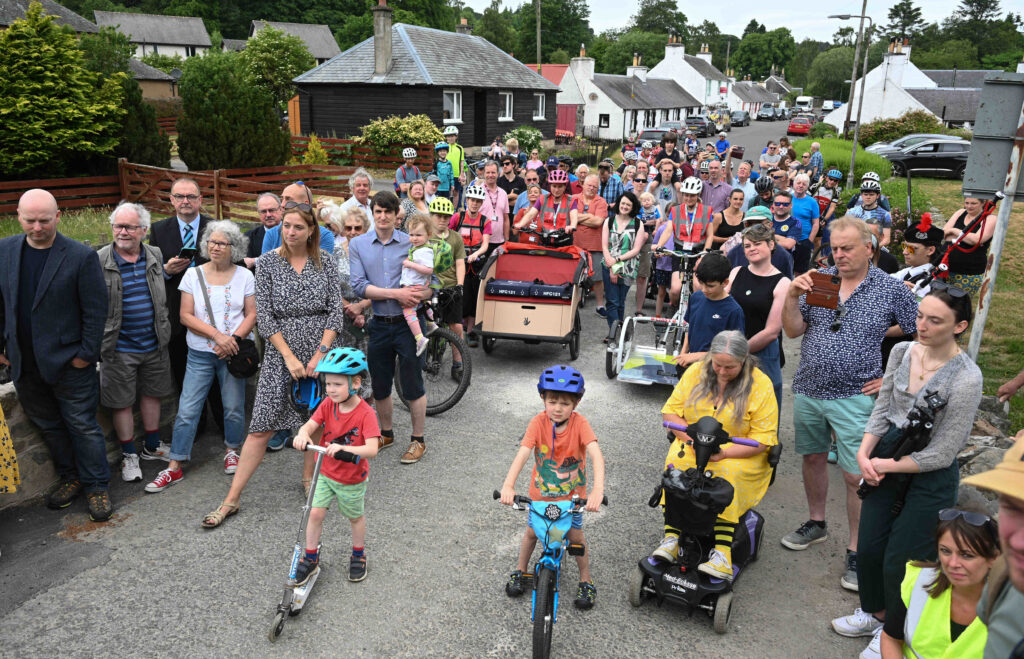
Speaking ahead of the event, Councillor John Greenwell, Executive Member for Roads & Maintenance, said:
“I am absolutely delighted that the new Eddleston Water Path has been completed and that members of the public are now making use of the route.”
“This project has been a true collaborative effort, with thanks to the Scottish Government and SOSE for their financial support in helping make this project a reality and also to the Community Council’s and Trust’s from both Peebles and Eddleston for their support and tireless efforts.”
“A dedicated path will ensure the safety of residents and visitors to the area whilst also encouraging others to choose more active methods of travel between the two settlements.”
Cllr John Greenwell, Scottish Borders Council
Director at Sustrans Scotland, Karen McGregor, added:
“We’re very pleased the Eddleston Water Path is now open to the public.”
“This new route creates a vital traffic-free space for walking, wheeling and cycling between Peebles and Eddleston, enabling residents and visitors to the area to travel actively while accessing key services and local greenspace.”
“We hope the new path makes it safer and easier for lots more people to leave the car at home for short everyday journeys.”
Karen McGregor, Scotland Director, Sustrans
SOSE Chair, Professor Russel Griggs, said:
“SOSE is committed through all we do to supporting a Wellbeing Economy and all the positive things that it brings for communities.”
“The new Eddleston Water Path is a fantastic example of this approach, encouraging local people and visitors to get active and help address issues such as fuel poverty and community isolation and improve resident’s health and wellbeing.”
Prof Russel Griggs, South of Scotland Enterprise
